
NPS Interpretation of the 1860 Lincoln Home PhotographsWhen Abraham Lincoln became the 1860 Republican presidential nominee the nation wanted to learn more about the frontier lawyer who was about to become their president. Reporters, artists, and photographers came to Springfield to gather information about Lincoln, his family, and his hometown.Years later, three photographs that were produced during the summer of 1860 would become valuable tools for interpretation and restoration of the Lincoln home . One of the photographs, (LIHO- 001) is reproduced on the back of the Lincoln Home tour ticket which provides an opportunity for comparrison of the historic image of the Lincoln Home with the Lincoln Home that we can visit today. Whipple PhotographsTwo of the photographs were taken by Boston photographer John Adams Whipple. They feature Lincoln and his two youngest boys in the front yard and include neighbors standing on the front walk. Whipple set up his camera in the front yard of the Corneau house making the Corneau fence visible in the foreground. These photographs are the basis for the Corneau fence style. 
NPS 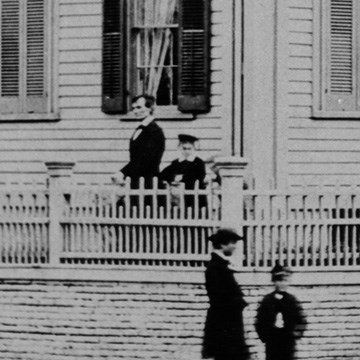
Photograph 1 (LIHO- 001) clearly shows Abraham Lincoln and his son Willie standing behind the fence. A close look reveals that the youngest son Tad is peaking from behind the corner post. The identity of the people in front on the walkway is not known. 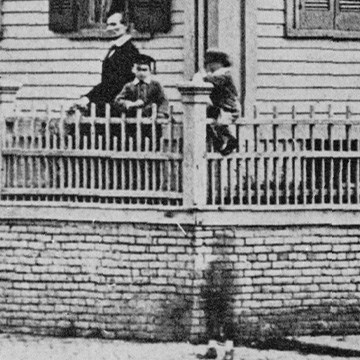
Photograph 2 (LIHO- 002) again shows Abraham Lincoln and his son Willie, but in this version Tad is more visibly seated next to the corner post. The blurry image in front, with only the feet clearly visible, is that of the Lincoln boys’ playmate, Isaac Diller. Interpreting Details of the Whipple PhotographsPhotographs capture history and memory. We can learn information about the Lincoln Home from the Whipple photographs taken in 1860.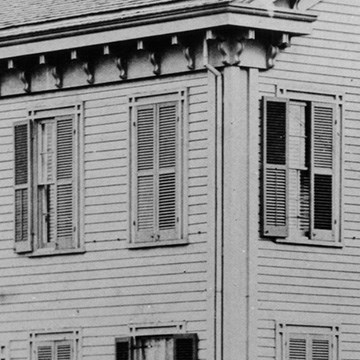
Shutters and WindowsThese photographs give us a good image of the Lincoln Home shutters. Note that some of the shutters are open and some are closed.From one of the open shutters, we can see that venetian blinds are visible in the guest bedroom, located on the southwest corner of the Lincoln Home's second floor. 
The Lincoln ElmThe small elm tree that appears in this photograph is one that Abraham Lincoln may have planted himself.This tree is seen in later photographs taken at the time of Lincoln's funeral in May of 1865, as well as other photographs taken over the years, in which it appeared in various stages of deterioration. The lifetime of this original tree finally ended on August 17, 1906, when it was destroyed by a fierce storm. 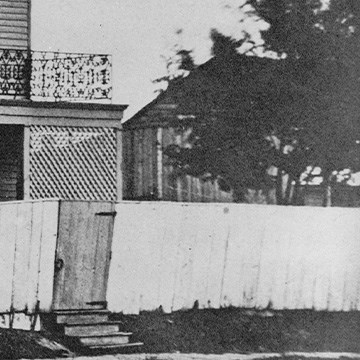
Apple TreesOne of two backyard apple trees is visible peeking over the fence of the Lincoln Home backyard. An apple tree can also be seen in a later image of the Lincoln Home backyard, taken in 1865. Back PorchThe back, south porch latticework is also visible from the Whipple photographs. The Side GateThe somewhat haphazard-looking fence gate perhaps hints how Mr. Lincoln was not known as “Mr. Fix-it.” 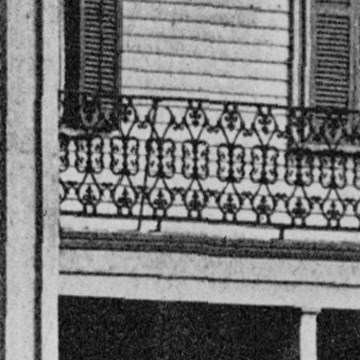
Porch Roof RailingIt is appears that a smalll section of the decorative railing on the back porch rood was missing in 1860. That piece has never been replaced. 
Carrigan HouseA portion of the neighboring house, the Carrigan House, is visible.Although many of the houses and buildings in Lincoln Home National Historic Site are original structures from Lincoln's time, the Carrigan House no longer stands today. 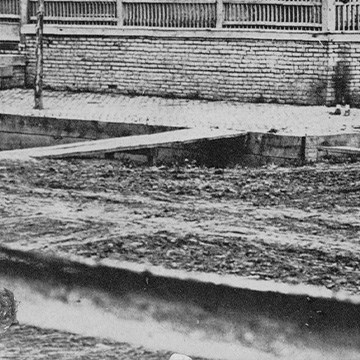
Streets, Sidewalks, and CurbsFrom these photographs, we can see that the streets were made of dirt and that they were much deeper than they are today. |
Last updated: May 12, 2021
